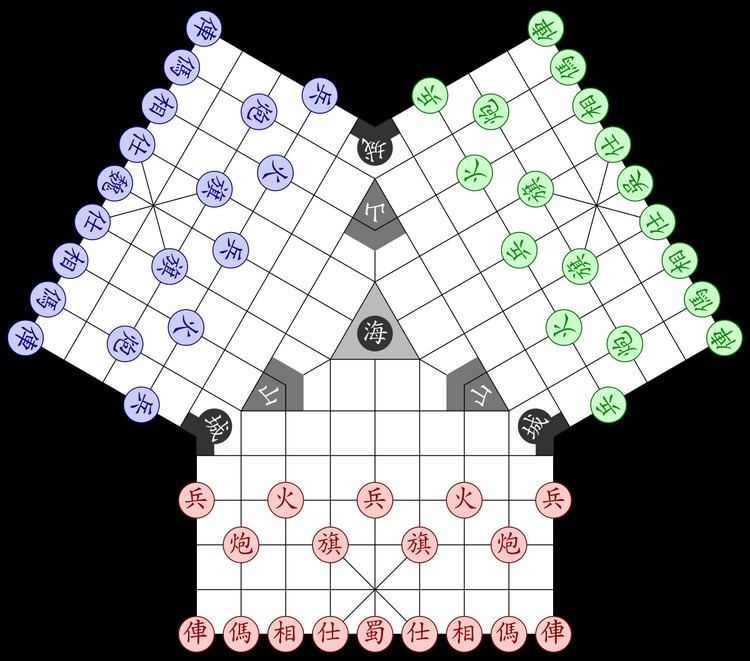 | ||
Game of the Three Friends (Chinese: 三友棋, Sān-yǒu-qí ; also called Sanyou Qi or Three Friends Chess) is a three-player variant of the game xiangqi ("Chinese chess"). It was invented by Zheng Jinde (Chinese: 鄭晉德, Zhèng Jìndé) during the Qing Dynasty (1661–1722 AD).
Contents
The game symbolizes the Three Kingdoms period war (221–264 AD) between the rival states Wei, Shu, and Wu, each vying for control of China after the fall of the Han Dynasty.
Game overview
The Three Friends are represented by colors blue, red, and green, respectively. Each player controls all the standard xiangqi pieces, with each general represented by the letter of its respective kingdom. In addition, each player controls two kinds pieces: "flag" (旗 chi ) and "fire" (火 chuo ).
A fire moves like a forward-moving ferz: one step diagonally forward, with no retreating.
Checkmate and other conventions are the same as in xiangqi, except that after a checkmate occurs, the mated general is removed from the game, and the player who delivered the checkmate appropriates the mated player's remaining pieces for his own use. The last surviving kingdom (general) is the winner.
The board includes spaces which restrict travel for certain pieces; these spaces are labeled "ocean" (海; Hǎi), "mountain" (山; Shān) and "city" (城; Chéng). Chariot and horse pieces are not allowed to pass through the ocean space. Cannons are not allowed to pass through mountain and city spaces.
Play conventions
It may be necessary or desirable to add further play conventions for completeness:
